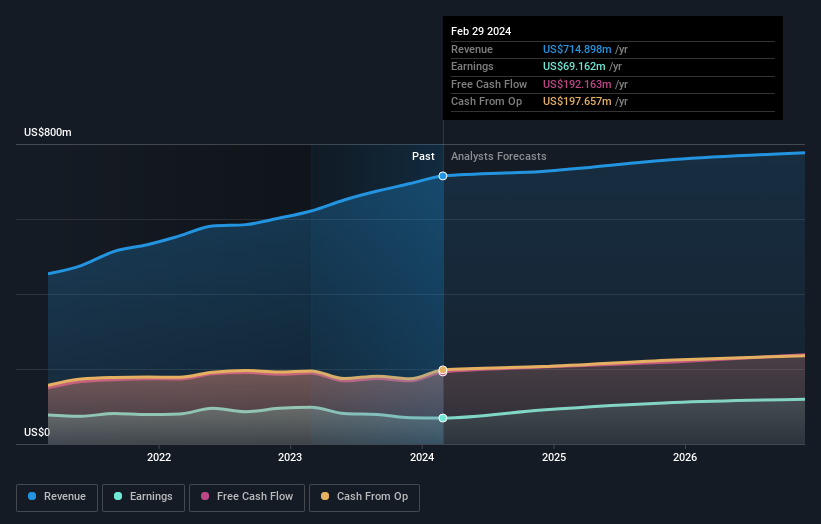Results: Progress Software Corporation Exceeded Expectations And The Consensus Has Updated Its Estimates
Progress Software Corporation (NASDAQ:PRGS) last week reported its latest first-quarter results, which makes it a good time for investors to dive in and see if the business is performing in line with expectations. Revenues were US$185m, approximately in line with expectations, although statutory earnings per share (EPS) performed substantially better. EPS of US$0.51 were also better than expected, beating analyst predictions by 17%. Following the result, the analysts have updated their earnings model, and it would be good to know whether they think there's been a strong change in the company's prospects, or if it's business as usual. So we collected the latest post-earnings statutory consensus estimates to see what could be in store for next year.
Check out our latest analysis for Progress Software
Following last week's earnings report, Progress Software's eight analysts are forecasting 2024 revenues to be US$726.9m, approximately in line with the last 12 months. Per-share earnings are expected to leap 27% to US$2.01. Yet prior to the latest earnings, the analysts had been anticipated revenues of US$728.5m and earnings per share (EPS) of US$1.99 in 2024. So it's pretty clear that, although the analysts have updated their estimates, there's been no major change in expectations for the business following the latest results.
There were no changes to revenue or earnings estimates or the price target of US$63.61, suggesting that the company has met expectations in its recent result. There's another way to think about price targets though, and that's to look at the range of price targets put forward by analysts, because a wide range of estimates could suggest a diverse view on possible outcomes for the business. The most optimistic Progress Software analyst has a price target of US$67.00 per share, while the most pessimistic values it at US$60.00. The narrow spread of estimates could suggest that the business' future is relatively easy to value, or thatthe analysts have a strong view on its prospects.
Another way we can view these estimates is in the context of the bigger picture, such as how the forecasts stack up against past performance, and whether forecasts are more or less bullish relative to other companies in the industry. We would highlight that Progress Software's revenue growth is expected to slow, with the forecast 2.2% annualised growth rate until the end of 2024 being well below the historical 13% p.a. growth over the last five years. By way of comparison, the other companies in this industry with analyst coverage are forecast to grow their revenue at 12% per year. Factoring in the forecast slowdown in growth, it seems obvious that Progress Software is also expected to grow slower than other industry participants.
The Bottom Line
The most obvious conclusion is that there's been no major change in the business' prospects in recent times, with the analysts holding their earnings forecasts steady, in line with previous estimates. Fortunately, the analysts also reconfirmed their revenue estimates, suggesting that it's tracking in line with expectations. Although our data does suggest that Progress Software's revenue is expected to perform worse than the wider industry. There was no real change to the consensus price target, suggesting that the intrinsic value of the business has not undergone any major changes with the latest estimates.
Keeping that in mind, we still think that the longer term trajectory of the business is much more important for investors to consider. We have estimates - from multiple Progress Software analysts - going out to 2026, and you can see them free on our platform here.
Plus, you should also learn about the 3 warning signs we've spotted with Progress Software .
Have feedback on this article? Concerned about the content? Get in touch with us directly. Alternatively, email editorial-team (at) simplywallst.com.
This article by Simply Wall St is general in nature. We provide commentary based on historical data and analyst forecasts only using an unbiased methodology and our articles are not intended to be financial advice. It does not constitute a recommendation to buy or sell any stock, and does not take account of your objectives, or your financial situation. We aim to bring you long-term focused analysis driven by fundamental data. Note that our analysis may not factor in the latest price-sensitive company announcements or qualitative material. Simply Wall St has no position in any stocks mentioned.

